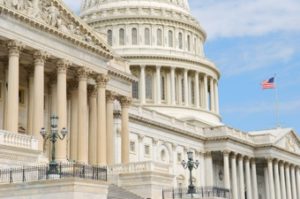
Following 11 years under government control, and becoming a “whipping post” for the financial crisis, Forbes latest commentary surrounding GSE reforms suggest America is about to do the right thing for housing finance reform.
The analysis, written by Tim Pagliara, chronicles the history of the GSEs, from the “surprise move” in September 2008 when they were placed under government control, to Fannie Mae’s inception in 1938, as a way to buy loans from the banks and create longer terms for repayment, and thus, the 30-year mortgage was born.
“Today, the GSEs provide mortgage liquidity in much the same way they did in 1938. Both Fannie and Freddie buy mortgages from banks and re-package them for sale to insurance companies and pension funds that rely on predictable income to offset the liabilities for pension and annuity payments,” Pagliara said.
The Forbes piece continues by saying the chief financial officer of the GSEs briefed the Treasury and FHFA in 2012, saying the GSEs were “so profitable that they would have to reverse the DTAs,” which were the basis of the conservatorship.
Additionally, instead of allowing the GSEs to pay back the government and become private, Treasury officials planned a scheme to sweep 100% of their earnings and profits in an amendment to the original preferred purchase agreement, known as the Third Amendment Sweep.
“Treasury Secretary Tim Geithner and FHFA director Ed DeMarco justified the move by telling the world that the GSEs continued to languish in a death spiral and would never return to profitability,” Pagliara says.
What came next, on September 5, 2019, was Collins v. Mnuchin in the Fifth Circuit in an en banc hearing found that the government violated the Administrative Procedures Act. The court found that email communication from Obama administration advisor Jim Parrott as evidence that the government “acted in bad faith” and contrary to their mission to protect assets as conservator.
All this has led to FHFA Director Mark Calabria announcing that The U.S. Department of the Treasury and the FHFA recently announced that they had agreed to modifications to the Preferred Stock Purchase Agreements (PSPAs) that will permit Fannie Mae and Freddie Mac to retain additional earnings in excess of the $3 billion capital reserves currently permitted by their PSPAs.
These modifications are an important step toward implementing Treasury’s recommended reforms that will define a limited role for the Federal Government in the housing finance system and protect taxpayers against future bailouts,” said U.S. Treasury Secretary Steven T. Mnuchin.
To compensate Treasury for the dividends that it would have received absent these modifications, Treasury’s liquidation preferences for its Fannie Mae and Freddie Mac preferred stock will gradually increase by the amount of the additional capital reserves until the liquidation preferences increase by $22 billion for Fannie Mae and $17 billion for Freddie Mac.

 theMReport.com Your trusted source for mortgage banking news
theMReport.com Your trusted source for mortgage banking news








